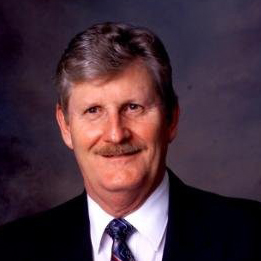Rethinking Transportation – A Greener and more Accessible Future
Do you think “Rethinking transportation autonomy and infrastructure sustainability in light of trains requiring two drivers while the trucking industry considers zero drivers as a viable future” is something a perfectly sane writer would come up with for the working title of a magazine column?
I don’t, yet that’s the one I suggested for this column. It didn’t make the cut in favor of something shorter.
I have been pondering intriguing questions that challenge the current state of transportation, and a recent headline caught my attention: Crew-Size Edicts Threaten Small Railroads.
Scanning the headline, I assumed crew size would be reduced with the introduction of autonomous trucking-style technology. As they say in the South, “You could have knocked me over with a feather,” when I realized the article actually addresses laws in 13 states that increases the size of train crews. I can hear union truckers now: “If it takes two people to drive a train, we need two drivers to drive a truck in city traffic. Maybe we should have three drivers to be safe on some highways.”
The disparity between the number of drivers required for trains and trucks seems illogical. Trucks, which can change lanes and operate in close proximity to other vehicles, typically have only one driver. Perhaps it is time to rethink our priorities and explore the potential benefits of making trains autonomous before trucks.
If we embrace the idea of autonomous trains, we may also consider the possibility of reducing the length of trains and making them more efficient. With autonomous railcars that can be sent on their way when loaded, we could optimize transportation efficiency and alleviate traffic congestion.
Furthermore, why not explore the concept of an adapter kit that allows trucks to switch between roads and rail tracks seamlessly? This could offer more flexibility in transportation options and potentially decrease the wear and tear on roads caused by heavy truck traffic.
Addressing the point about infrastructure damage and the trucking industry’s contribution, it is essential to foster discussions within the trucking industry’s leadership so that they understand there are solutions that actually have a payback for the trucking industry. Saving bridges also saves suspension and tire wear and tear. Encouraging the adoption of zero out-of-balance wheel ends and implementing maintenance practices to reduce axle hop would be steps in the right direction. Preventable axle hop has cost taxpayers billions of dollars just in bridge damage.
As I prepare for the EnergyandMobility.org conference in Cleveland, Ohio, I will delve into pressing questions surrounding transportation electrification. Can our aging and fragile electric grid support the demands of a fully electrified transportation system? Integrating emerging technologies for electric vehicles and electric airborne systems (think not only drones but also flying cars) in urban mobility are key questions to be addressed.
Finally, the pursuit of a “net zero” carbon climate must not come at the cost of burdening future generations with insurmountable debt. It is crucial to find sustainable and economically viable solutions to combat climate change. As climates change, our technology for predicting heat waves and blizzards is getting better. I just read an opinion post on LinkedIn by Tony Paradiso, a revenue growth strategist for Greentech companies, about reinforcing the national power grid by building and putting on wheels massive batteries the size of boxcars. The boxcars can be autonomous and self-propelled with unlimited battery range.
Knowing a blizzard is going to hit New England three days in advance can have these massive batteries connected to the national power grid and working before the first snowflake hits the ground. This gives a whole new meaning to Dr. Deming’s observation: “Management is prediction.”
Our journey toward a sustainable and efficient transportation future involves exploring the potential of autonomous trains, the adaptation of new technologies in the trucking industry, and the integration of renewable energy sources in transportation. By addressing these questions and challenges we can pave the way for a greener and more accessible future for all.
About the Author :
 Mr. Bob Rutherford
Mr. Bob Rutherford
President – Rutherford & Company
New Technology Committee Chairman – Technology & Maintenance Council, American Trucking Association
Mr. Bob Rutherford is a 50-year veteran of the trucking industry, his contributions to the industry have been recognized by being awarded the American Trucking Association / Technology & Maintenance Council’s (TMC) Silver Spark Plug for technical excellence and the Recognized Associate Award for supporting the organization’s membership committee. He is also an Ambassador for the EnergyandMobility.org Conference.
Everyday there seems to be an article about autonomous vehicles. Autonomous trucks are interesting to me from both a business standpoint and a human being standpoint. Digging deeper into autonomous trucks lead to learning about artificial intelligence, which lead to machine learning which lead to deep learning.
Mr. Bob Rutherford can be contacted at :











